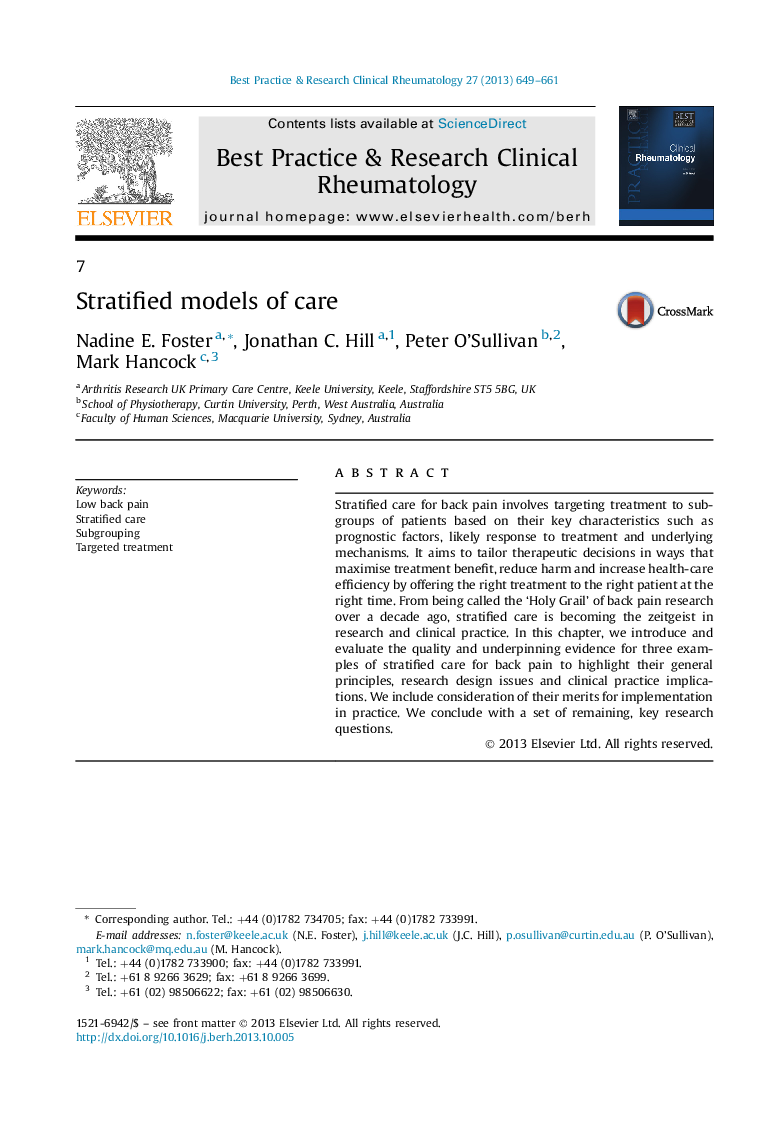| Article ID | Journal | Published Year | Pages | File Type |
|---|---|---|---|---|
| 6114760 | Best Practice & Research Clinical Rheumatology | 2013 | 13 Pages |
Abstract
Stratified care for back pain involves targeting treatment to subgroups of patients based on their key characteristics such as prognostic factors, likely response to treatment and underlying mechanisms. It aims to tailor therapeutic decisions in ways that maximise treatment benefit, reduce harm and increase health-care efficiency by offering the right treatment to the right patient at the right time. From being called the 'Holy Grail' of back pain research over a decade ago, stratified care is becoming the zeitgeist in research and clinical practice. In this chapter, we introduce and evaluate the quality and underpinning evidence for three examples of stratified care for back pain to highlight their general principles, research design issues and clinical practice implications. We include consideration of their merits for implementation in practice. We conclude with a set of remaining, key research questions.
Related Topics
Health Sciences
Medicine and Dentistry
Immunology, Allergology and Rheumatology
Authors
Nadine E. Foster, Jonathan C. Hill, Peter O'Sullivan, Mark Hancock,
